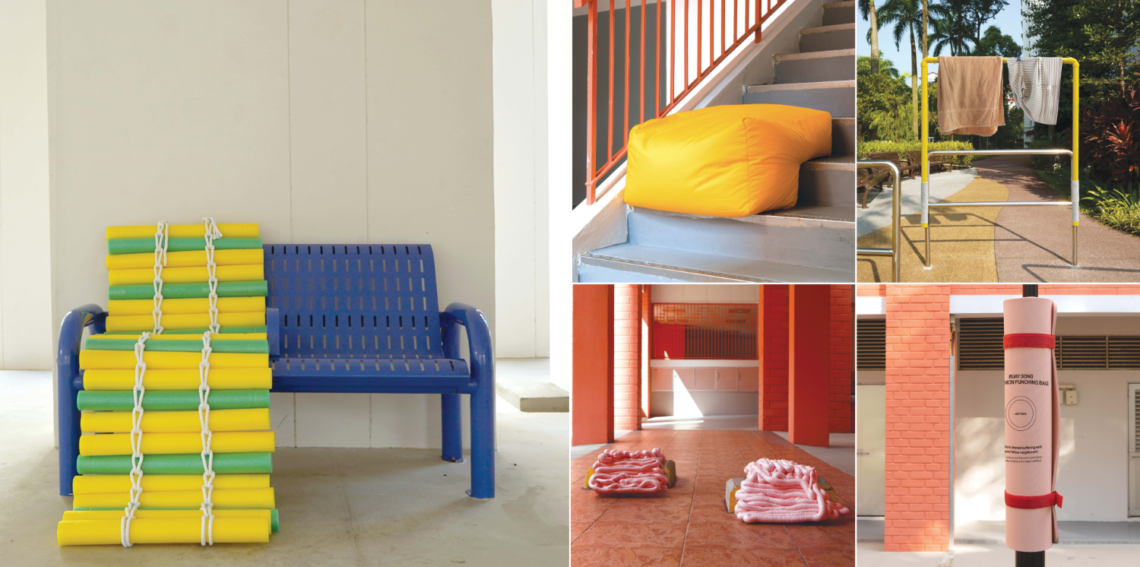She Wants to Re-envision the City of the Future
Stagmont Park may be a typical neighbourhood park in Singapore to many, but it holds special meaning to visual communications designer Gracia Goh.
It is where the recipient of the 2022 DesignSingapore Scholarship grew up as her kindergarten was close by. During the recent pandemic, it also reminded her that such everyday spaces can offer communities, particularly disadvantaged ones, much respite and create a sense of belonging. A desire to better understand how design can enhance this role of public spaces inspired Gracia to pursue a Master of Science in Design and Urban Ecologies at the Parsons School of Design, The New School.
1. How did you become interested in pursuing a career in design?
I’ve always had an inclination toward the arts, whether it’s painting, drawing or photography. When I was studying mass communication in polytechnic, it became apparent to me that I am geared towards design as I was always the appointed designer for projects. I took the plunge to do a design degree at LASALLE. By the time I graduated, I knew that I wanted to move away from marketing and advertising to do design research that would serve the public, and Chemistry, a local design studio, offered me a job to do just that.
2. How would you explain the job of a visual communications designer to people in the street?
I propose ways to visually communicate to an audience. For example, when I was working at Chemistry, I designed a wayfinding system for the National Library Board based on my study of how people use library spaces. The system determined the graphical elements such as typography and icons, font sizes and colours, and the heights and positions of the signages, all of which would help library users of different ages and abilities to find their way around.

3. What is one memorable design project that you’ve worked on?
My final year project, called Not-So-Public Public, explores the provision, accessibility and design of public spaces such as void decks, playgrounds and staircases. Before embarking on this, I had a one-dimensional focus on visuals. This project expanded my idea of what a designer could do, and led me to produce a series of objects that poked fun on the way people interacted and transformed public spaces. For example, I noticed people sometimes sit on the steps other than using them to get from one floor to another, so I placed a bean bag on a staircase. I also made public chairs more comfortable for rough sleepers by using pool noodles to cushion the seats. This challenged the intention of the chairs’ designs to limit comfort.
4. Why do you want to further your studies in design and urban ecologies?
In Singapore, and Asian cities in general, city planning revolves around efficiency because of land scarcity. While this is important, cities nowadays are so complex that there needs to be a more multifaceted understanding of infrastructure, systems, geo-ecology and even the human body. For example, freedom of mobility is a human right, yet, in practice, it is available only to people of certain classes, races and abilities. This course appeals to me because it uses design, policy, ecology and activism to assess the way cities are designed.
5. Why did you apply for the DesignSingapore Scholarship?
I hope to show other designers how we can contribute at a strategic level and act as an agent for social change. The creative thinking that we possess gives us the ability to envision something that is not yet there. If we can equip ourselves with knowledge of other fields such as urban planning, we may help to co-create a more sustainable and inclusive society.
6. How do you hope to contribute to the future of design in Singapore?
I hope to show other designers how we can contribute at a strategic level and act as an agent for social change. The creative thinking that we possess gives us the ability to envision something that is not yet there. If we can equip ourselves with knowledge of other fields such as urban planning, we may help to co-create a more sustainable and inclusive society.
7. What else do you enjoy besides design?
Since I arrived in New York, there has been a lot of walking, so that’s something that I must learn to enjoy. I’ve been clocking 10,000 steps every day, but I’m learning about urban design along the way!
Find out more about the DesignSingapore Scholarship here.







